Purple and lilac roses: varieties with a description and cultivation

Roses have always been considered the most beautiful flowers. To date, breeders have bred thousands of different varieties of all kinds of shades. But purple and lilac roses attract special attention with their uniqueness. In psychology, purple symbolizes luxury, wealth, and also wisdom. And it is not surprising that many gardeners want to diversify their flower gardens and plots with just such flowers.

Popular varieties
Roses are classified into three types: cut, pot and garden roses.
But it should be noted that modern varieties do not always strictly correspond to this classification, since breeders combine the best qualities of different varieties and try to create species that would be most adapted to various weather conditions, were resistant to diseases and pests.
The most popular varieties of roses are hybrid tea. Most of them are single large double flowers on long, strong shoots. The height of the bushes is about 1 meter. These roses are mainly grown for cutting. Flowers with lilac and violet hues include such varieties as Blue Perfume, Delilah, Mainzer Fastnacht.



Also a very important group for gardeners are climbing, climbing roses., with which you can decorate hedges, gazebos, arches, pergolas, entrance groups. They have very long, strong shoots, reaching 2-6 meters, large flowers with a bright aroma, blooming all summer until the very frost. Of the most popular purple roses of this group, one can name "Lilac rain", "Indigoletta".
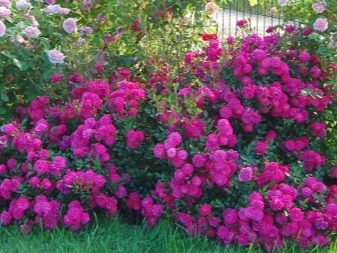
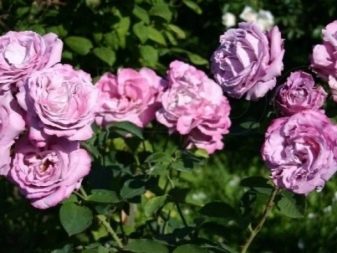
The so-called border roses are in great demand. They are not very tall; they form dense inflorescences on the shoots, sometimes even covering the foliage. Therefore, such small varieties are planted along alleys, paths, small flower beds are made, which bloom continuously until late autumn. A striking example of this type is "Lilac Mist".
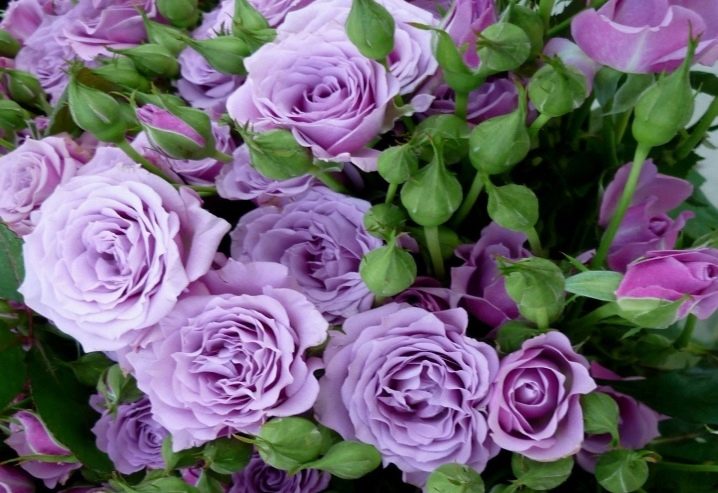
Ground cover roses. Even the name of this group can be guessed at. that they cover the ground like a carpet. And indeed it is. These roses have many advantages: they are unpretentious, resistant to pests and diseases, they take root easily, they suppress the growth of weeds. Of the varieties with purple hues, we recommend the Lipstick rose.

Potted roses can be distinguished separately. They are also very popular as they can be grown at home all year round. Kordana varieties are very common and are known for their lush flowering. But these flowers are very whimsical and demanding to care for. Of the lilacs, Lavender can be recommended.
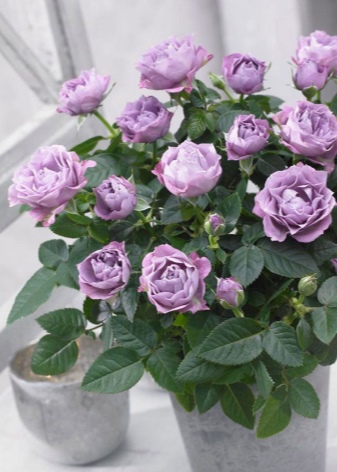

Recently, Kenyan roses have been especially popular. And this is understandable, since these flowers, grown on plantations in Kenya, have a number of advantages, have a huge number of all kinds of shades and an unusual, delicate aroma, beautiful, elastic bud. Despite the long transportation, they retain their fresh appearance for a long time and do not lose their shape. Varieties of wonderful delicate lilac shades - "Vanguard", "Nightingale", "Ocean Song".
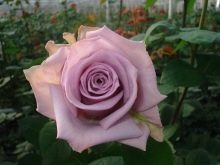


And one more type of roses that deserves attention are standard roses. These are roses of any kind, grafted on a rosehip stem (tree). This is what gives the rose many useful properties, such as frost resistance and disease resistance. The strong roots of the rose hips provide the rose with sufficient nutrition and, accordingly, guarantees a lush flowering.Depending on the size of the stem, the corresponding varieties of roses are planted. That is, the higher the stem, the larger varieties of roses are grafted onto them.
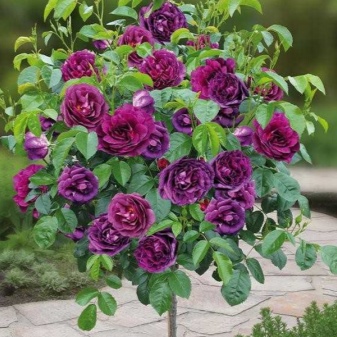
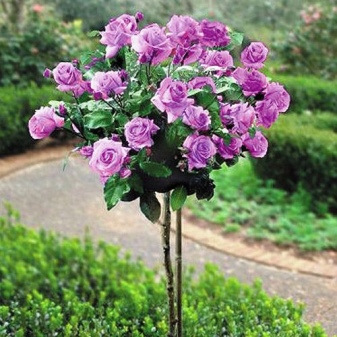
Description and shades
Peony roses originate from old English roses. These are hybrids of the famous English breeder David Austin. For example, spray rose Misty Bubbles is a spray rose from the Bubbles series (which translates as "bubbles") has large spherical pink-lilac buds, is quite resistant to weather changes, is very good in cutting, and can stand in a vase for up to 10 days.
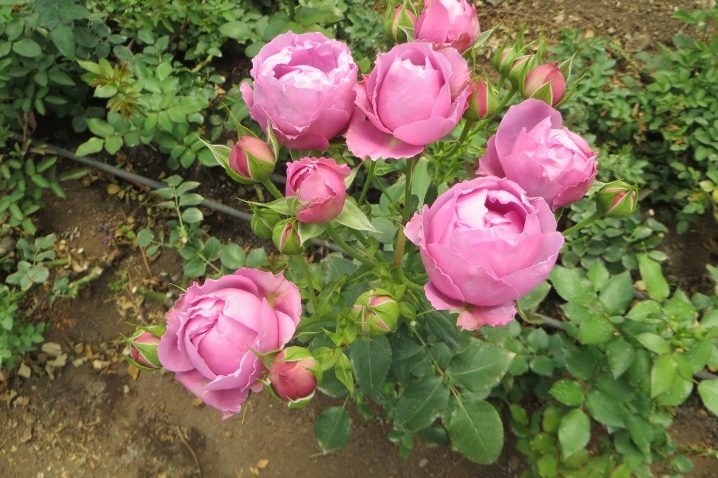
Rose Ebb Tide - one of the last varieties bred in England, famous for its rich plum shade. Belongs to the floribunda group. Has a very strong spicy clove aroma. An unusual dark, almost black-violet color covers some imperfections (blooms in two waves with a break). Another dark purple variety is Night Owl.
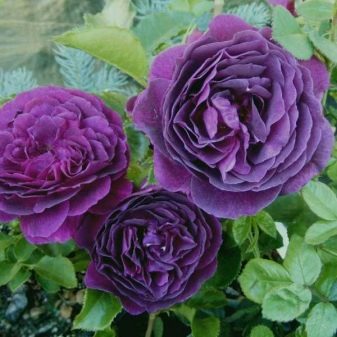
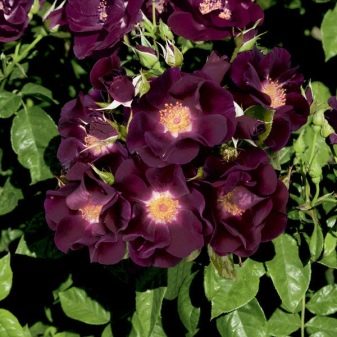
Excellent rose, which belongs to climbing ground cover varieties, and is also used as a scrub in curbs, disease resistant, abundant flowering is "Lilac rain"... The flowers are at first crimson, then fade to a light lilac color. The rose blooms very abundantly, easy to care for, great for beginner gardeners.

Tea-hybrid rose "Delilah" has buds of a very beautiful pale purple hue, classic shape. This variety is suitable for single and group plantings and is good for cutting.


Mainzer Fastnacht - a large rose of delicate pale purple color on a long stem, does not lose its beauty even at the end of flowering.
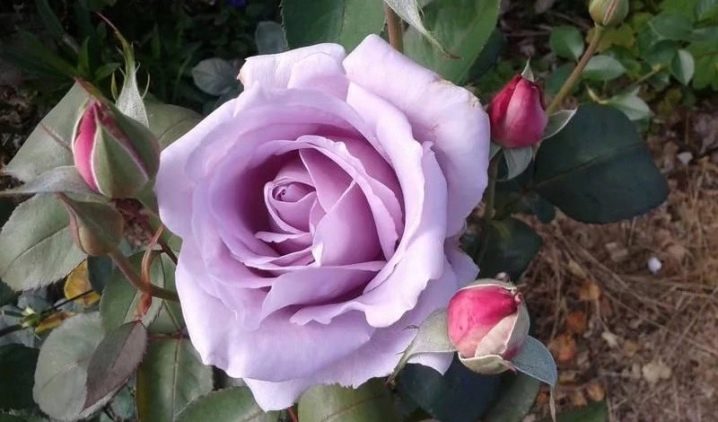
"Purple Haze" - a rich lilac-colored border rose in the bud and white-lilac when opened. Blooms very profusely and for a long time.
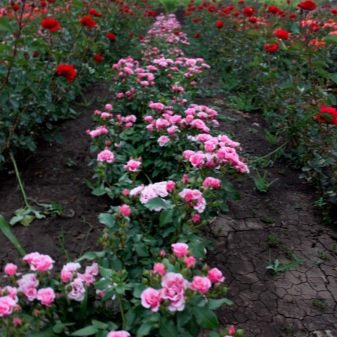
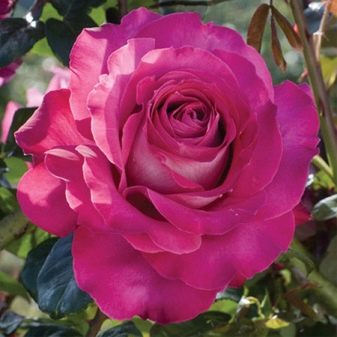
"Lipstick" - a widespread ground cover rose with semi-double flowers, in which the outer petals are light, almost white, and the inner ones are bright red-purple. Very aromatic and disease resistant.
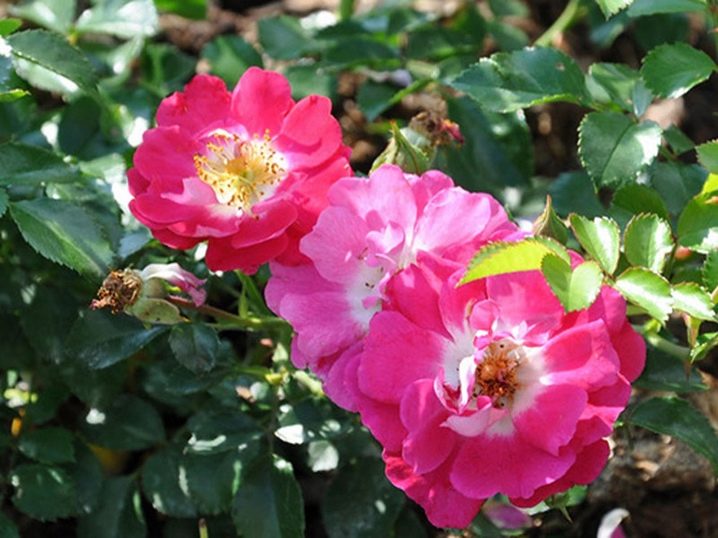
Lavender Cordana - one of the varieties of miniature roses with double lavender flowers and a delicate aroma. They bloom all year round, they are grown in containers and pots, and are brought into the room for the winter.
"Avangard" - a variety of Kenyan roses of light lilac color. Large flower, cut resistance up to 10 days.
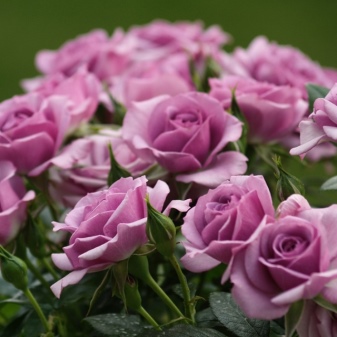

Necessary conditions for growing
Roses are very whimsical and demanding to care for. And this must be borne in mind if you want to grow these gorgeous flowers. The four main factors are light, warmth, air, fertile soil.
- Roses need good lighting throughout the day., but at the same time, direct sunlight should be avoided. This is especially true of our favorite purple and lilac varieties, which are all bred through long-term selection and are very delicate.
- Warm climates are desirable, but now many newly bred varieties are resistant to cold snaps and weather changes. It is important to choose the right variety that is suitable for the given climatic zone.
- Places where there is a lot of air and space are suitable for roses., but it is better not to plant where there are constant drafts.
- The best soil for rose gardens is neutral. The soil should not be heavy and not very light. In clay soil, moisture stagnates, which leads to diseases. And from a soil that is too light, all nutrients are quickly washed out and water quickly leaves, in which case the roses need to be watered and fed often, which is also not always correct.
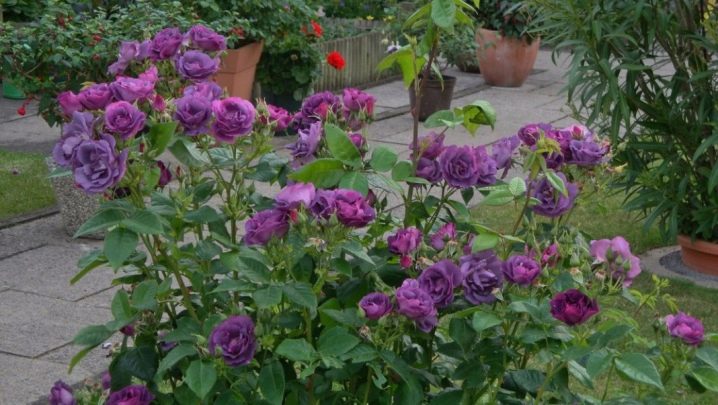
Landing
The correct choice of seedling and the correct planting is already half the success in growing a rose.
It is better to choose seedlings in nurseries or specialized stores. And purchase only those varieties that are suitable for a given climatic zone. When choosing a seedling, pay attention to the condition of the roots so that they are free of damage and rot.

When planting, you first need to correctly determine the location and prepare the soil. First, dig up the planting site and select all the roots of the weeds.Then prepare a hole, which should be fairly free in size for the root system of the seedling, preferably so that there is still room for the necessary additions.
Add-ons are required to improve the quality of the soil. For example, clay and humus can be added to a very light sandy soil, while heavy soil, on the contrary, can be diluted with sand and peat. Ash or other deoxidizing agent can be put in acidic soil. And it would also be nice to use special fertilizers for roses, there are such ones on sale. If water stagnates on the site, drainage (gravel, broken brick, etc.) must be laid at the bottom of the hole. Spill the prepared hole with water.
Dig the seedling so that the grafting site remains 6-7 cm underground. Compact the ground, but not very much.
Roses can be planted both in spring and autumn, but this must be done so that the seedling has time to take root before the cold weather.
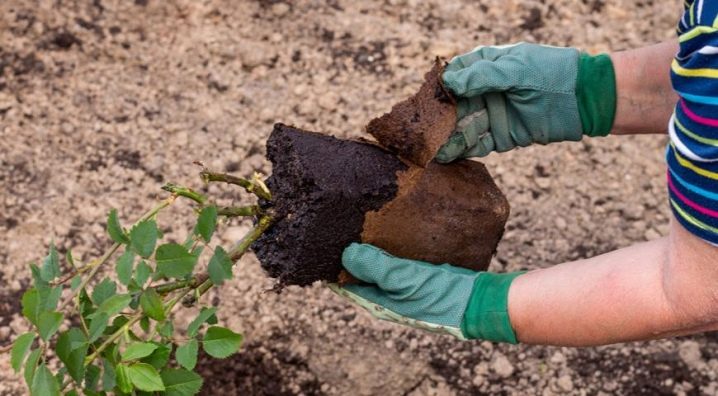
Care
Despite the fact that roses are quite whimsical flowers, caring for them is not such a difficult process.
It is important to remember the main points:
- correct and timely watering;
- on time fertilizers and fertilizing;
- protection against insect pests and diseases;
- competent pruning and shelter for the winter.
Watering roses is enough once a week, unless the summer is very hot. The watering rule is better less often and more abundantly. In hot weather, water the roses at the root in the evening. If it is not possible to water in a timely manner, it is advisable to mulch the roses with mowed grass, straw, foliage, sawdust.
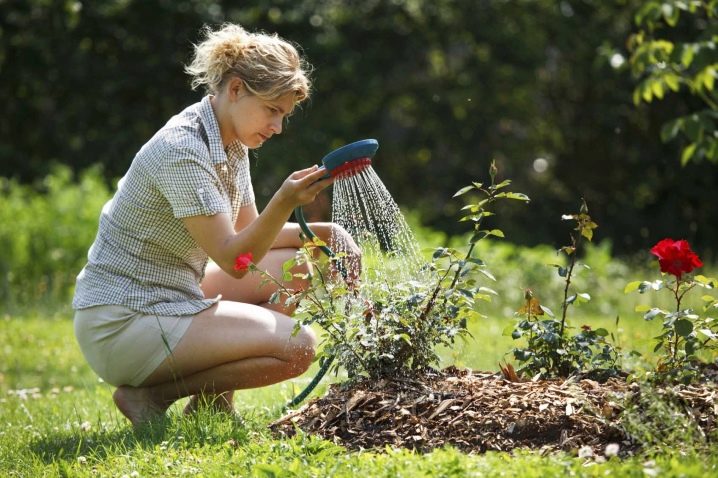
Fertilizers are applied in several stages. In the spring - nitrogen fertilizers for growing green mass. In the period of budding and flowering - potash and phosphorus fertilizers. In the second half of the summer, stop feeding. In the fall, before the bushes are prepared for wintering, it is better to use only potash fertilizers for faster lignification of the newly appeared shoots.
And special universal fertilizers for roses are also sold. But it is best to use natural top dressing, such as ash, rotted (necessarily!) Manure, humus from a compost heap.
The main pests of the plant are powdery mildew and aphids. In order not to have to deal with these troubles, it is better to carry out preventive spraying. A solution of tea soda saves from powdery mildew, and a solution of laundry soap and wormwood from the invasion of aphids. Experienced gardeners have many other methods of struggle (decoctions of onion and garlic peels, calendula, marigolds, and more). And also currently there are a number of effective drugs, such as "Fitosporin-M", "Aktar" and many others.
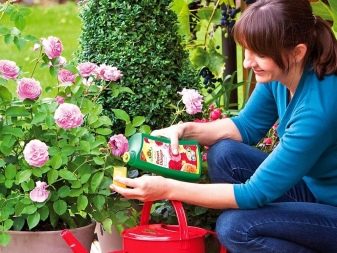
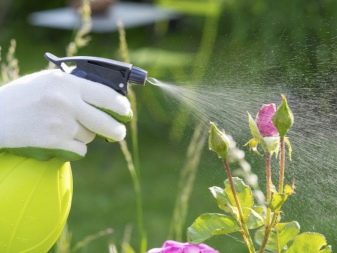
But pruning roses also helps in pest control. It is also important for the correct formation of the bush. The best time for pruning is spring, as pruning stimulates the emergence of new shoots, and this is undesirable in the fall before frost. You need to cut off damaged stems, shoots growing inside the bush, as well as wilted flowers.
Another important point is frost protection. Even if zoned varieties are planted, roses can die in a harsh winter. Moreover, varieties with purple and lilac flowers are quite sensitive and vulnerable.
When the sub-zero air temperature starts steadily, you can begin to cover the plants.
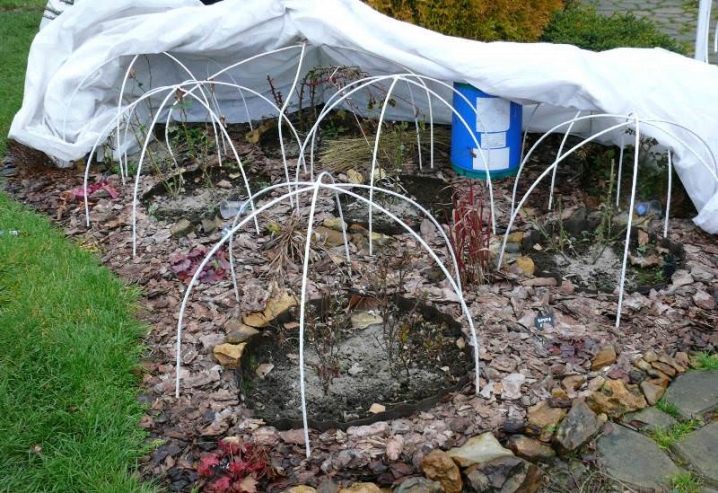
Before sheltering, you need to spray the bushes with a solution of Bordeaux liquid, this will protect them from rot and fungi.
Then remove all organic residues from under the bush and cover with soil about 20-25 cm.
Various materials can be used to shelter roses, such as burlap, lutrasil, cardboard, jute bags. And also use coniferous spruce branches, any kind of shield shelters made of wood.
In any case, care must be taken that the plant does not come into contact with the ground tightly, there is an air gap, and that too heavy structures do not crush the bushes with their weight.
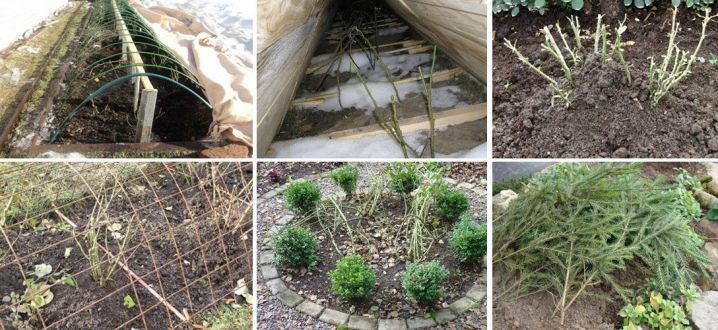
If you follow all the care recommendations, then your favorite purple roses will always delight you with lush flowering until late autumn.
For how roses are grown, see the next video.

































































































The comment was sent successfully.